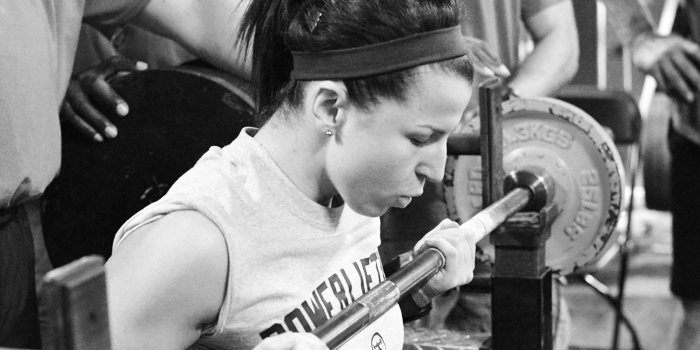
Before we get into the new science data, let's briefly discuss what variable resistance truly is. In resistance training there are three types of strength curves:
- Ascending
- Descending
- Bell-shaped
Ascending Strength Curve — In exercises with an ascending strength curve, the lower part of the movement is the harder part, while the upper part of the movement, or the part of “locking out the weight,” is the easier part. An exercise with an ascending strength curve is the bench press. This is likely why many people do half reps on the bench press.
Descending Strength Curve — In exercises with a descending strength curve, the lower part of the movement is the easier part and the upper part of the movement is the harder part. An exercise with descending strength curve is the chin-up. I’m guessing that’s why most of the people do only half chins.
Bell-Shaped Curve — A bell-shaped curve is an exercise in which it is possible to lift more resistance, if only the middle part of the range of motion is performed, and not the beginning or end portion of the range of motion. Elbow flexion has a bell-shaped strength curve.
When we accommodate the resistance with chains or bands, we achieve flattening out of the strength curve, making the phase of the movement that was easy also difficult.
Bands — When using variable resistance with bands, we need to generate constant velocity in order to complete the rep. This is a great tool for teaching the athlete to not lose acceleration, and can be very useful for athletes in team sports.
Chains — Chains add mass. When we lift the weight, the chain links are elevated from the floor making the load more unstable which increases the firing of motor units. The elevation of links also flattens out the curve. All of that can lead to an increase in overall strength.
Powerlifters have been using this technique for decades, and have preached the effects of variable resistance for years through their anecdotal benefits and individual success.
WATCH: The Easiest Way to Set Up Chains
The basis of working with variable resistance is that flattening the strength curve and working with that kind of resistance will lead to:
- Increasing the rate of force development
- Increasing the coordination between the agonistic and synergistic muscle group
- Increasing the activation of motor units
- Reducing the drop in force produced in the sticking point region
We can all agree that dogma in training is dead and even the gym rat is asking, “What does the science say about this?"
Well, we have your answer. Soria-Gila et al. (2015) have scienced the shit out of this topic. They have made a meta-analysis* in which they analyzed science papers about variable resistance.
Methods and Subjects
Seven science papers were included in the meta analysis. One of the criteria was that the training program for the subjects was seven or more weeks. Also, the training frequency was at least two times a week.
Subjects
There were 235 subjects aged 18.3-27.9 years. In five of the seven papers, the subjects were with two or more years of training experience. In the other two papers, the subjects were with 12 or less months of experience.
Training
The average duration of training was 12±5 weeks. The average weekly frequency of training was 3±1. Subjects performed the exercises the following way:
- In four of the studies the training was for the upper body (bench press)
- In one of the studies the training was for the lower body (squat)
- In two of the studies, the training was for the upper and lower part of the body (bench press and squats)
Chains were used in two of the seven studies, and in the other five studies, bands were used for achieving variable resistance.
Results
Results have shown greater improvement in strength measured through 1 RM in the subjects that were training with variable resistance than in the subjects that were training the conventional way.
The interesting information is that the improvements were made only by the subjects who had training experience.
The subjects, who weren’t trained, didn’t make improvements that were greater than the subjects who did the conventional training.
RELATED: An Alternative Look at Concentrated Loading in the Sport of Powerlifting
Based on these results, using variable resistance can improve strength for trained subjects. That’s why most of the powerlifters who reach a plateau using conventional training make improvements when they include variable resistance in their training. According to Shope et al. (2011) when using variable resistance the person will have to generate more force in the last part of the concentric phase. Using variable resistance for trained athletes is a way to generate a new stimulus and make new adaptations in training. This will lead to greater efficiency and eventually to greater levels of strength.
However, for beginners and untrained individuals variable resistance is not the best option, since they can improve using just conventional training. Shope et al. (2011) did not record improvements in untrained subjects even when the training lasted for as much as 24 weeks. That is not to say they should not ever do training with chains or bands, just that variable training shouldn’t be in the primary focus. Mucurdy et al. (2009) attributed the strength gains observed to the different stability involved in the variable and conventional training protocols, such that the neuromuscular activity required for a strength improvement depends on the stabilization needed to control resistance.
Another interesting fact is that Haikinenn, Alen and Komi (1985) reported increased electromyography activity during eccentric actions. Greater muscle damage occurs during the eccentric portion of the exercise, and that damage is the damage that the body adapts to and repairs. This is very exciting because increased activity on type II muscle fiber will result in a greater hypertrophic response, since muscle fibers type II have a great potential for hypertrophy.
Cronin at al. (2003) have found that using variable resistance on the leg press led to greater improvements in lateral movements. A very useful data for all athletes.
Okay, for all of you that have just scrolled to the bottom because you are too lazy to read, here are the most important facts:
- Variable resistance is a great way to improve strength and efficiency of movement.
- Variable resistance, when used correctly, is a great way to break through plateaus.
- It is important that the athlete is well trained for the variable resistance to be effective.
- Beginners will make improvements in training using the conventional way of training so variable resistance shouldn’t be the primary focus until later.
So get your chains and bands and get lifting!
Meta Analysis — Analysis indicates a number of a few separate scientific papers that have some similarities. The aim of the analysis is the comparison of the target papers in order to obtain a conclusion with great certainty. This analysis provides results that are more important than the results of one research, due to a greater number of entities and differences between them.
REFERENCES
- Cronin, J, McNair, PJ, and Marshall, RN. The effects of bungy weight training on muscle function and functional performance. J Sports Sci 21: 59-71, 2003.
- Häkkinen, K, Alen, M, and Komi, PV. Changes in isometric force-time and relaxation-time, electromyographic and muscle-fiber characteristics of human skeletal muscle during strength training and detraining. Acta Physiol Scand 125:573-585, 1985.
- McCurdy, K, Langford, G, Ernest, J, Jenkerson, D, and Doscher, M. Comparison of chain- and plate-loaded bench press training on strength, joint pain, and muscle soreness in division II baseball players. Journal of strength and conditioning research. 23: 187 195, 2009
- Shoepe, TC, Ramirez, DA, Rovetti, RJ, Kohler, DR, and Almstedt, HC. The effects of 24 weeks of resistance training with simultaneous elastic and free weight loading on muscular performance of novice lifters. J Hum Kinet 29: 93 106, 2011.
- Soria-Gila MA, Chirosa IJ, Bautista IJ, Baena S, Chirosa LJ. Effects of Variable Resistance Training on Maximal Strength: A Meta-Analysis. Journal of strength and conditioning research. 29(11):3260-70. 2015









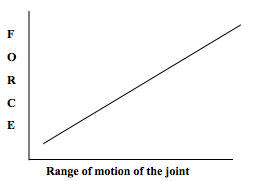
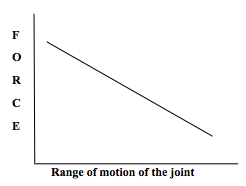
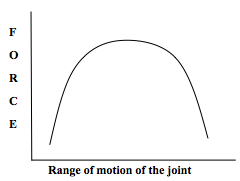
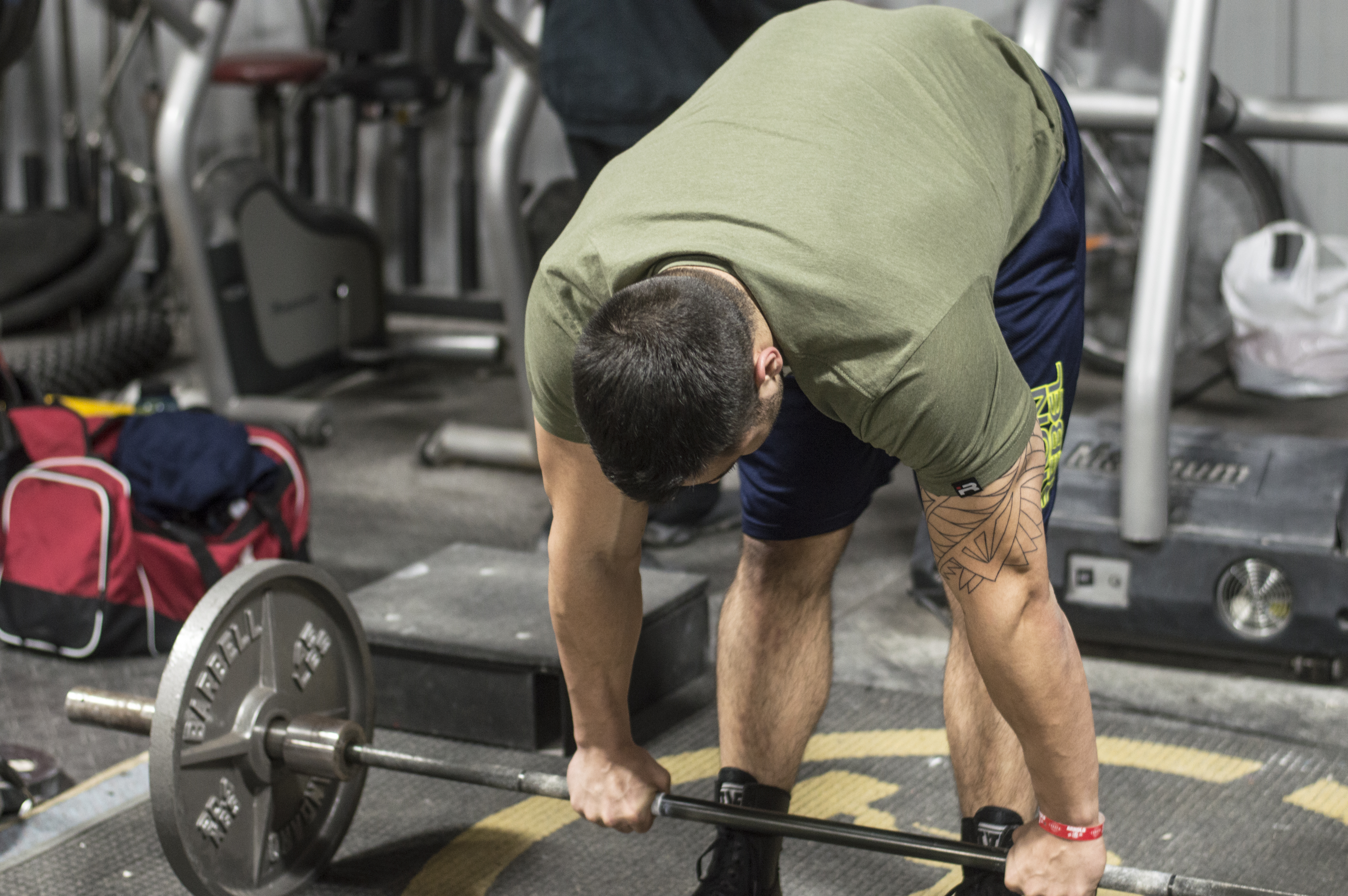
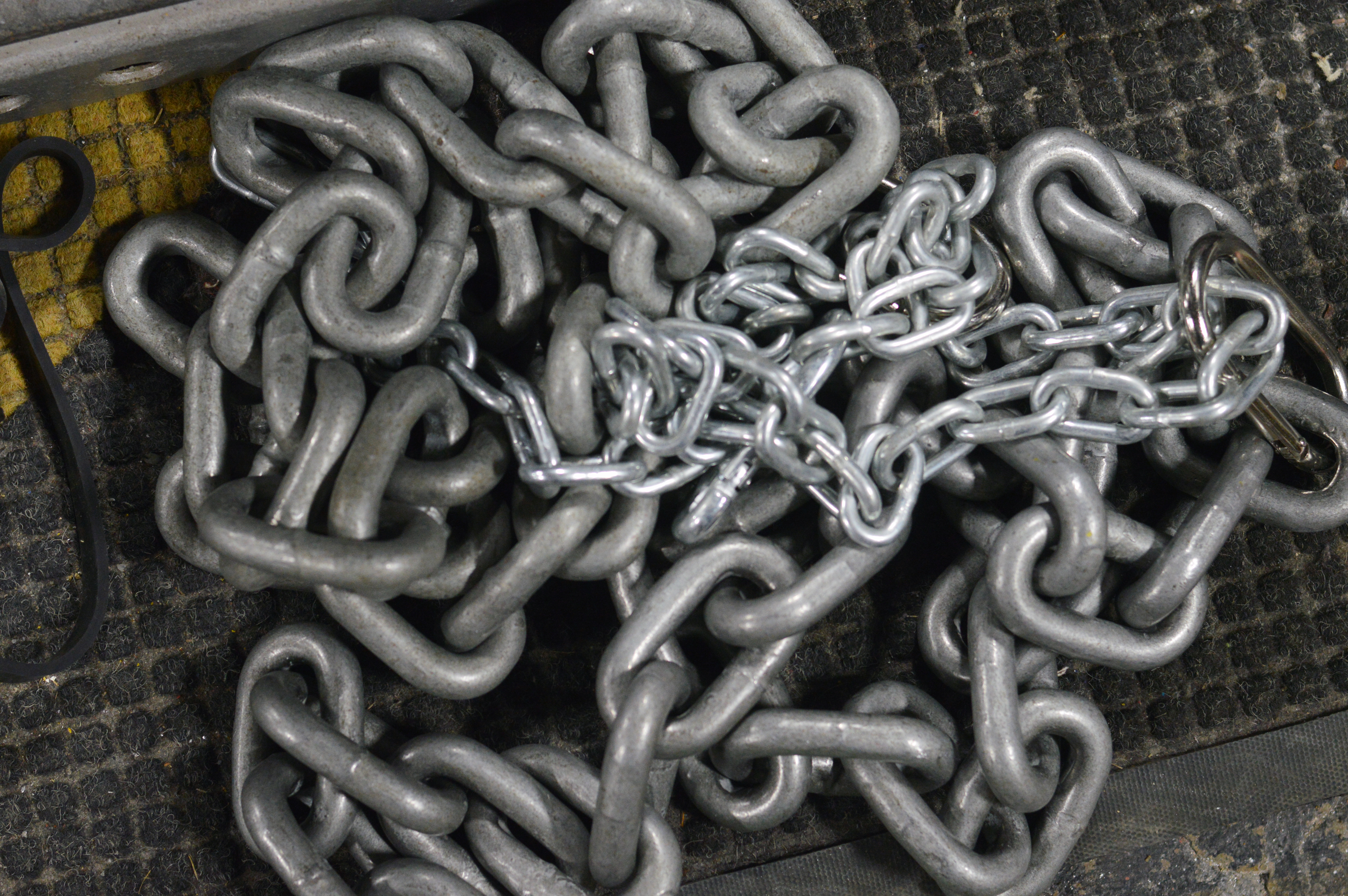

1) Bench pressing is a cyclical motion, from the joint position perspective, and therefore I would expect the joint to have a somewhat bell-shaped force-position curve. As you lower the barbell, the joint reaction force increases (in general) until you touch your chest and then decreases as you move back towards lockout. Maybe you were just talking about one phase of the motion or the force acting on the barbell? In either case, force is dependent on acceleration (along with other properties of the tissues) and we cannot describe the force against joint position without at least considering the acceleration occurring around that position.
2) Constant joint velocity movements would also flatten out the strength curve as the force being applied would stay relatively constant across the joint's range of motion. In this sense, you could achieve the same effect without the need of extra equipment like bands and chains. I am not aware of any studies comparing between these two concepts in terms of increasing force production, are you?
1 - When we analyze the motion of the exercise we are taking in consideration the concentric part of the motion. So we can agree that every exercise has a "harder" and an "easier" part. These parts can vary individually, and someone who is stronger at the bottom part will have a different strength curve than someone who is stronger at the top part. The strength curve can be different for two different people.
I didn't exactly understand the last sentence in the first part, could you explain a little bit.
2 - You could just do a constant velocity but then you are going to need to reduce the load and focus on generating constant velocity, which will lead to sub-optimal results.
And by doing so you would make both of the phases easy and have a easy-easy phase. Unlike with variable resistance were both of the phases are hard and you have a hard-hard phase.
Correct me if I am wrong.
All the best
1- Thanks for the explanation, it makes more sense now but I still think it is hard to say anything general about strength curves. Someone with weak triceps may actually find the lockout harder than beginning the motion off the chest (in the case of the bench press).
Force is dependent on the acceleration of the mass being moved. Therefore, we have the same case as above where we can not say anything general between force and joint position without considering acceleration. For example. consider two repetitions of bench press from the same lifter where the first is accelerated hard off the chest and slows down towards lockout and the second is moved slowly off the chest and accelerates towards lockout. The first repetition would have a descending force vs position curve while the second repetition would have an ascending force vs position curve. Based on this explanation, any motion, even just the concentric portion, could have any of the three force-position curves.
2 - I agree, and know from trying it, that you have to reduce the load. It just doesn't feel that easy as you are not relying on the momentum of the bar as you move towards the lockout position of the lift. I understand though, that essentially they are teaching your body different concepts.
I too follow the Learn, Live, Pass On mentality which is why I am interested in this discussion. Feel free to contact me if you want to discuss things further (tdesplen@gmail.com).
Thanks for the comments and discussion!